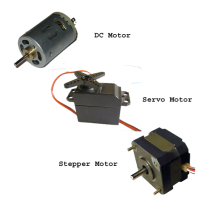 At the beginning of class we covered the idea that whenever a magnet rushes past a conductor it creates electricity. This is one of the ways that we can generate electricity. We also learned that whenever electricity runs through a conductor it creates a magnetic field.
At the beginning of class we covered the idea that whenever a magnet rushes past a conductor it creates electricity. This is one of the ways that we can generate electricity. We also learned that whenever electricity runs through a conductor it creates a magnetic field.
We demonstrate this by dropping a magnet down a copper pipe and noticing that it took a long time for the magnet to run through the pipe. This was a demonstration of Lenz’ law.
When we combine the idea that whenever electricity runs through a copper wire it creates a magnetic field and that magnetic opposites attract we have the basics of how a motor works.
By making sure that the copper wire in the motor (the windings) are only creating a magnetic field when we want them to be attracted to the magnet, we create a motor.
We actually did this when we made our own motors with nothing more than a battery, some copper wire and a magnet.

We then saw how the motor on the BOE-BOT worked. The BOE-BOT uses a continuous servo motor. This type of motor uses the length of a pulse to determine how long to go one direction or another. Most servos aren’t continuous but use the signal to determine what angle to point to. This type of servo is used to steer R/C cars and airplanes.
 There are many types of motors in the market today but the three types most commonly seen on robots are the DC motor, the servo motor and the stepper motor.
There are many types of motors in the market today but the three types most commonly seen on robots are the DC motor, the servo motor and the stepper motor.
When we made the battery motor we saw how to make it go backwards. Do you remember how? How would we do that using a DC motor?
When we changed the code for operating the servo motor whenever we put in a value of 750 micoseconds the motor stayed in one place. What values made it go forward? Which made it go backwards?
What would make our motor stronger? More wire, a bigger battery or a bigger magnet?
Want to know more
http://www.launc.tased.edu.au/online/sciences/physics/Lenz’s.html
Leave a comment